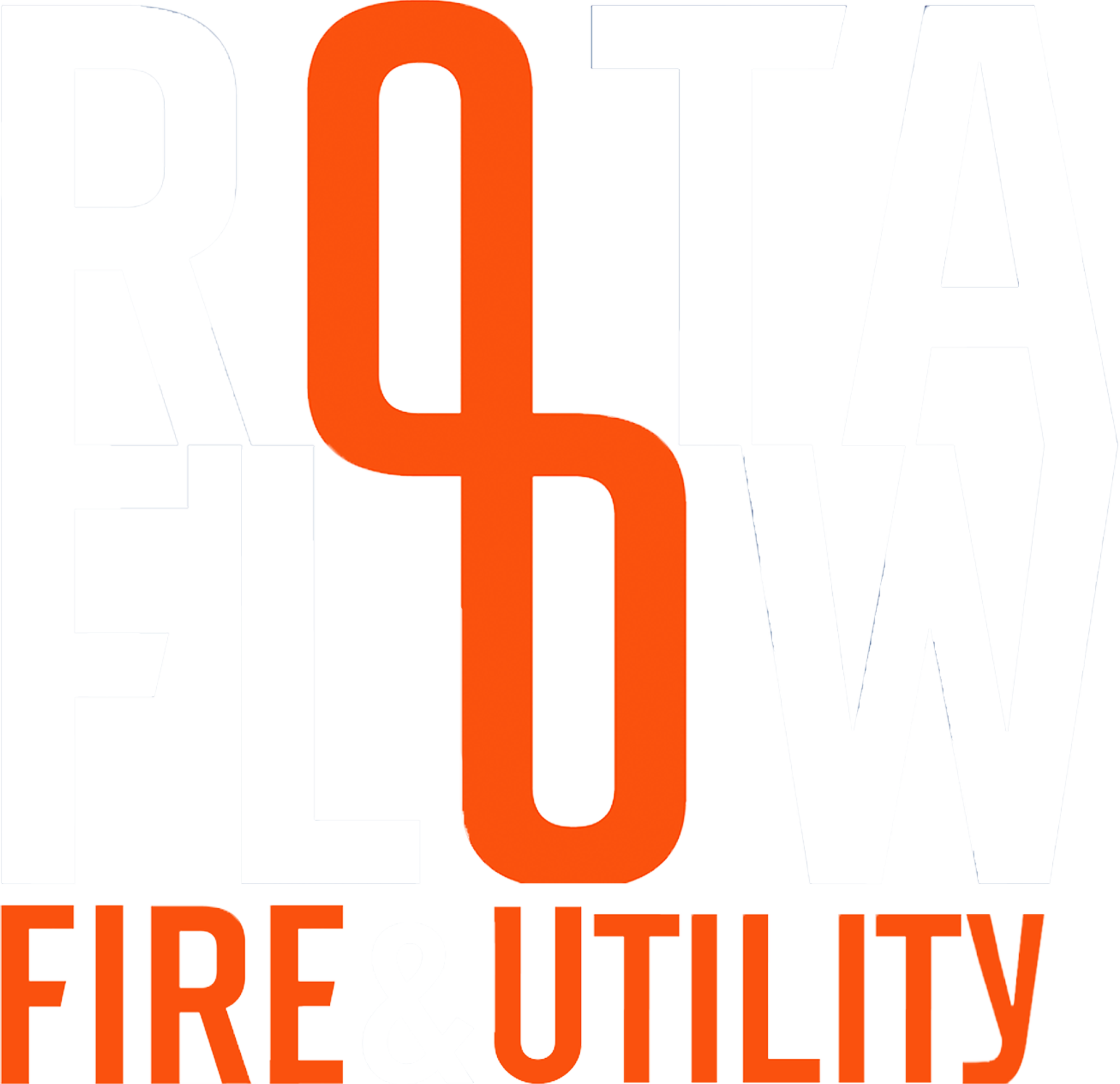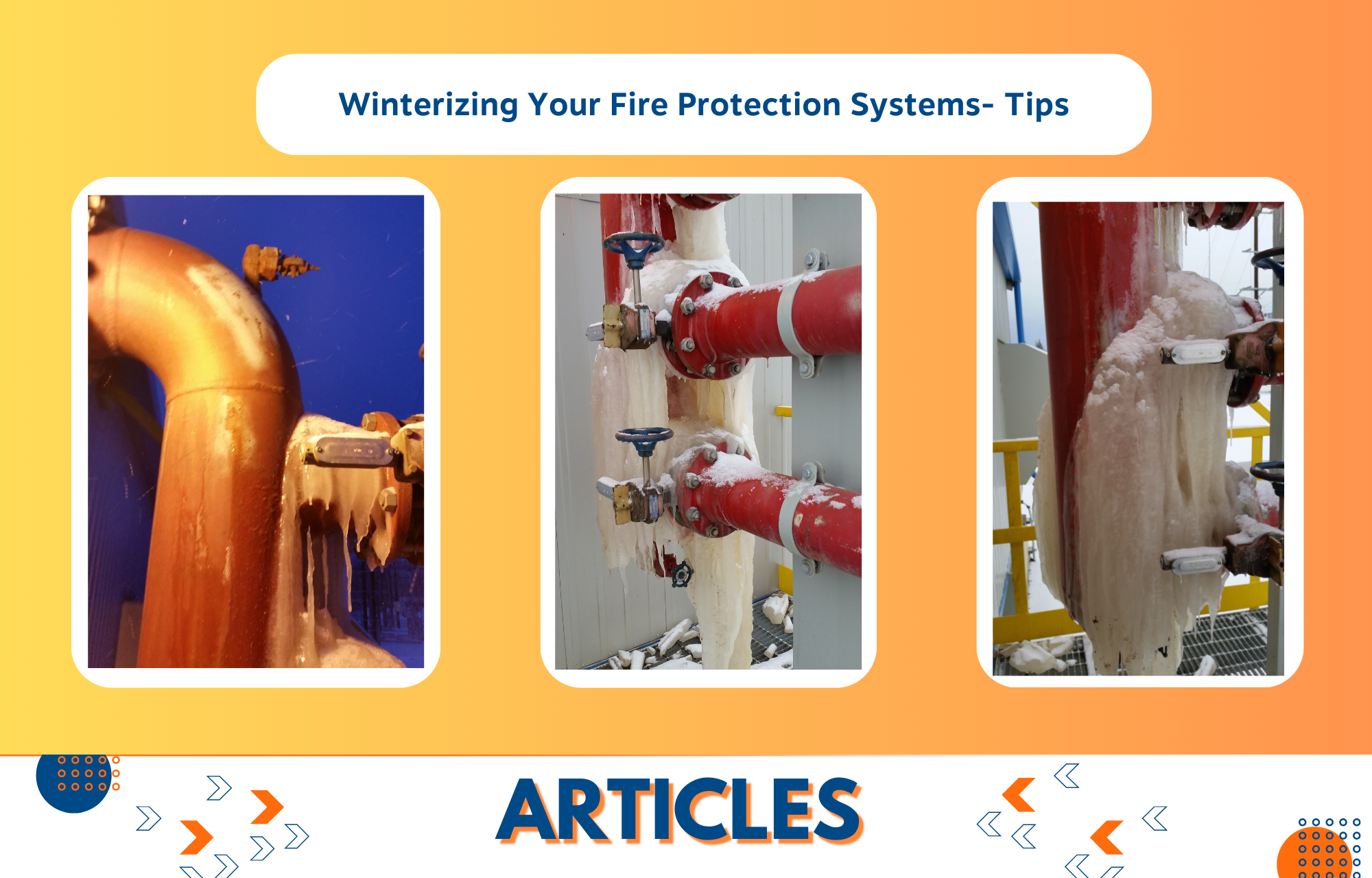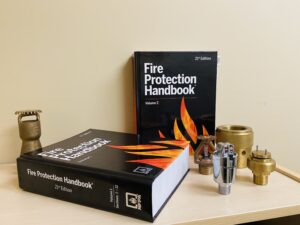It’s time to take proactive measures to protect your fire sprinkler system from potential harm resulting from below-freezing temperatures. Should a fire occur, a frozen fire sprinkler system can seriously jeopardize the safety of your structure and its people. The National Fire Protection Association (NFPA) and other industry professionals will provide valuable insights as we go over crucial advice for winterizing the fire sprinkler system in your building in this thorough guide.
Tips for Winterizing Fire Protection Systems
Usually, a dry pipe or antifreeze system protects sprinklered regions that cannot be kept at 40 degrees (F) or above. To prevent freezing, systems of these kinds could need more in-depth evaluations and regular maintenance. Tests of antifreeze systems should be conducted before the start of cold weather to ensure that the antifreeze solution will withstand the expected temperatures in the area where the systems are placed
Enclosures should be checked every day to make sure the minimum temperature is being maintained, and every week if the room has a low-temperature alarm installed, to ensure that the wet parts of the dry pipe valve are kept at least 40 degrees (F).
Auxiliary drains in dry pipe sprinkler systems should be drained after each operation of the system, before the onset of freezing weather conditions, and thereafter as needed.
The building and the dry system may sustain damage and expensive repairs if the system is not kept dry. In anticipation of cold weather, a program to monitor the system’s condition and the operation of the auxiliary drains should be implemented. After a dry sprinkler system operation, auxiliary drains should be drained on a daily basis until no water is discharged from the drain valve.
Understanding the Risks
Because water in the pipes can freeze, expand, and possibly burst in freezing temperatures, water damage to your property, interruption of business operations, and, most importantly, a compromised fire protection system when needed most, are all serious risks to fire sprinkler systems.
The National Fire Protection Agency (NFPA) stresses the need to keep fire sprinkler systems from freezing and mandates facility managers and building owners are in charge of making sure their systems are sufficiently shielded from winter weather.
Tips for Winterizing Your Fire Sprinkler System:
- Test and Inspect your systems to NFPA 25 requirements: To find any possible issues, plan routine examinations and testing of your fire sprinkler system with a competent, trained, fire protection professional. These covers making sure all system parts are in good operating order, testing alarms, and looking for leaks.
- Know Your System: Know your fire sprinkler system inside and out before starting any winterization procedures. Depending on what kind of system you have—wet pipe, dry pipe, or pre-action system, for example. Many systems could need different winterization methods.
- Speak with Experts: Work with licensed fire safety experts from Rotaflow Fire & Utility to evaluate your system and offer customised winterization advice. Potential system weaknesses can be found, and suitable fixes are recommended by a licensed fire protection engineer or a trained journeyperson sprinkler fitter.
- Insulate Exposed Piping: Wrap all exposed pipes—those in crawl spaces, attics, and outside walls—with insulation. Insulation done correctly keeps heat in and keeps pipes from freezing. Utilize insulation that has the right thermal resistance for your area.
- Seal Gaps and Openings: Seal any cracks or gaps in the walls, ceilings, or floors that let cold air into the sprinkler system pipes. By keeping the surrounding area warmer, good sealing lowers the possibility of freezing.
- Watch Over Heating Systems: Have your building’s heating systems checked and maintained on a regular basis. Ensure that heating systems are operating properly, particularly in locations where sprinkler system components are located. Quick resolution of any problems will help to avoid system failures.
- Put into action a winterization plan: Create a thorough plan outlining the precise actions to be taken both before and during the winter. Continual inspections, maintenance plans, and backup plans in case of unforeseen problems should all be part of the strategy.
- Emergency Ready: It’s important to be ready for emergencies even with careful winterization. Put in place an emergency reaction plan and make sure that every employee is trained in handling a fire emergency, including possible sprinkler system problems.
- Keep Up to Date on code requirements: Learn about pertinent codes and standards, such as those offered by the NFPA. Updates to code requirements guarantee that your fire sprinkler system complies with the most recent safety regulations.
Your Winter Preparedness Partner, Rotaflow Fire & Utility:
Particularly during the winter, Rotaflow Fire & Utility recognizes the value of a properly operating and maintained fire protection system. Experienced professionals on our staff provide a full range of fire safety services.
Set up a winterization check and talk about your fire protection requirements with Rotaflow Fire & Utility right now!
Courtesy: Chad Zallas, Mechanical Foreman/Fire Water Specialist, Operations



